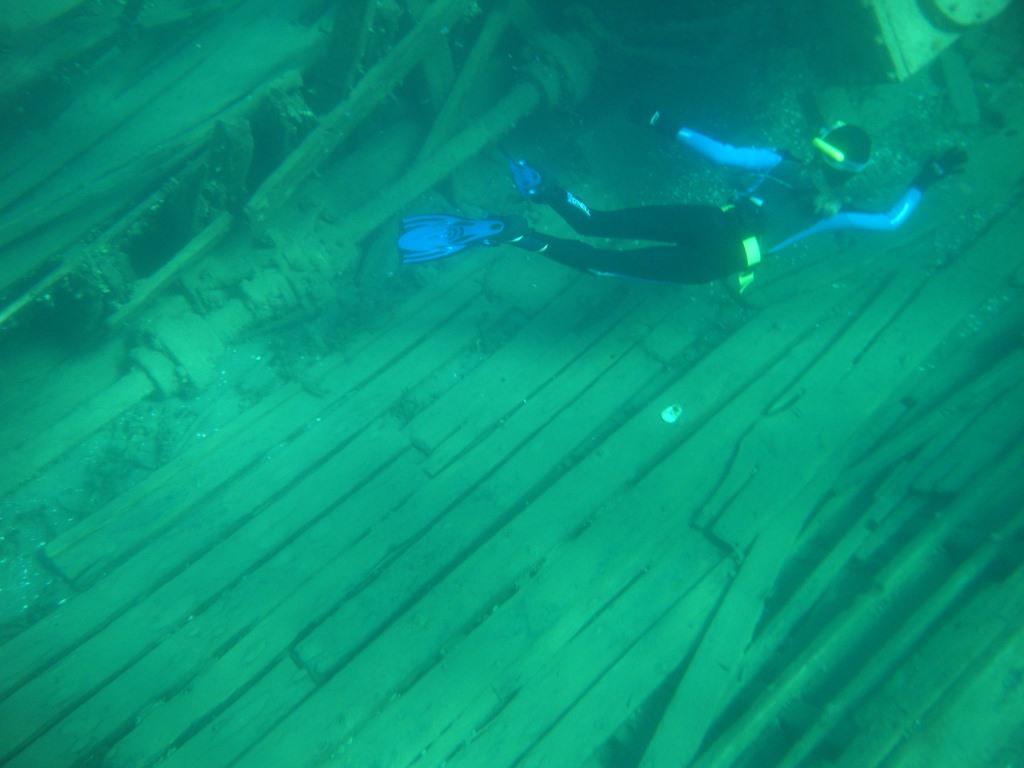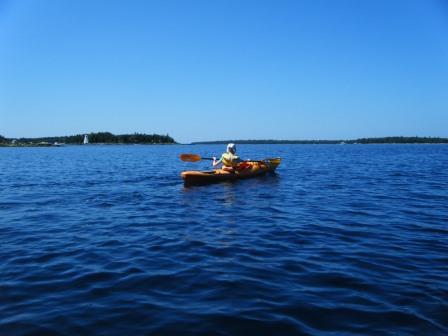I took these pictures yesterday of my daughter free-diving on the wreck of the Alice G at Tobermory in Canada, during a few days spent exploring the pristine waters of Lake Huron at the end of the Bruce Peninsula. The Alice G is one of some 22 known wrecks in Fathom Five National Marine Park, a unique example of a national park focused largely on the conservation of shipwrecks. To visitors, the forested wilderness and uninhabited shorelines can seem at odds with the presence of so many wrecks, but in the 19th century the treacherous neck of water between the main body of Lake Huron and Georgian Bay was a conduit for the transport of timber and other raw materials down the lakes towards the more populated parts of Canada and the United States, in ships differing little from seagoing vessels. Some of the best-preserved examples of schooners and barques of the late 19th century lies within the park, their wooden timbers perfectly preserved in the cold fresh water; one of them, the Sweepstakes, we also visited yesterday, photographing it in kayaks from the surface. The picture below of the bows shows the extraordinary preservation of the ship, lying in only a few metres of water with its 30-metre length almost completely intact.
The Alice G is one of a cluster of small wrecks just outside Tobermory harbour that represents another aspect of the lake economy, fishing. Built in 1902, a wooden-hulled steam screw tug some 20 metres in length, she was wrecked in a storm in 1929 and remains where she sank against the shoreline, with most of the wreckage lying in less than 8 metres of water. The wreck has special significance for me as this was where I carried out my first open-water dive, in 1978 at the age of fifteen; the image of her timbers and machinery lying on the lakebed has inspired several scenes of wrecks in my fiction, including a 19th century Nile river steamer in my most recent novel Pharaoh.
A view over Fathom Five park, with the harbour of Tobermory to the left, the open water of Lake Huron beyond and Georgian Bay to the right. The wreck of the Alice G lies in the centre foreground.
For me, all wrecks, no matter how easy to access, have an edge to them. I’m always conscious of the violence and fear they represent, and the proximity of danger. Yesterday kayaking far offshore we could see the open reach of the lake on the western horizon, and feel a touch of breeze that more than eighty years ago might have signalled the storm that wrecked the Alice G. ‘Great Lakes’ is really a misnomer; these are inland seas, as lethal in their rocky reefs and violent weather as any ocean. And underwater, just out from the swimming-pool conditions of the wreck, I dived down over a rocky ledge into another world altogether, through the icy shock of the thermocline into nothing but grey silted gloom. It’s yet another world at night, captured beautifully in the film below by my brother Alan during a dive we did on the wreck in October a couple of seasons ago, not long before the lake began to freeze up for winter.







